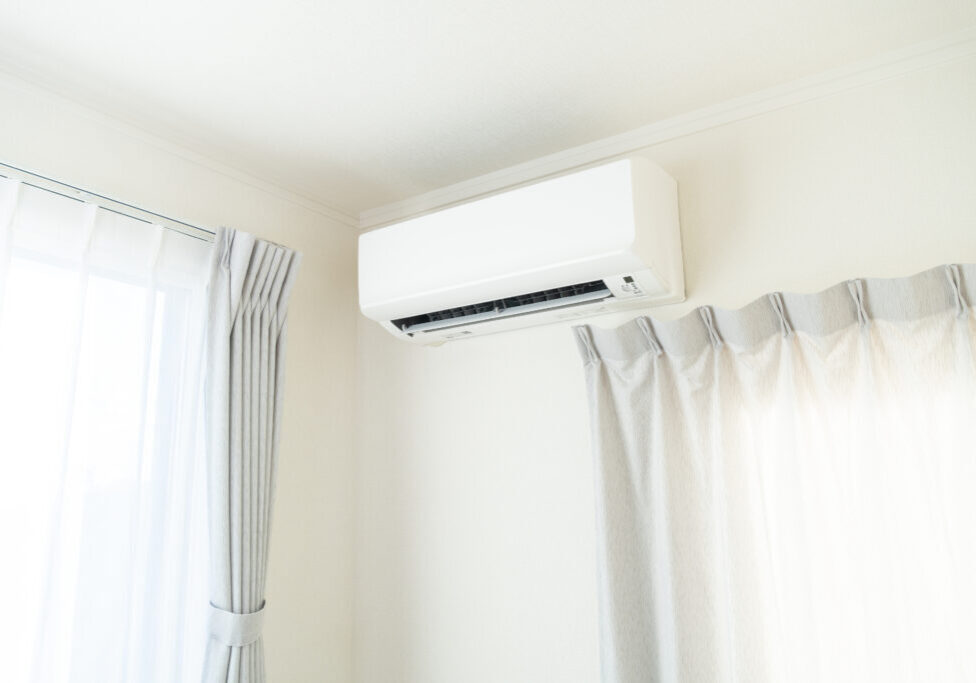How to Maximize the Efficiency of Your Fujitsu Mini Split System: Best Practices for Homeowners

Your Fujitsu mini-split system can significantly improve your comfort in the summer or winter. However, many homeowners don’t realize that simply having a good system isn’t enough; you need to know how to maximize its efficiency, particularly since it operates as a ductless system. Imagine if your favorite athlete didn’t train hard enough—you wouldn’t expect them to perform their best! Similarly, your mini-split requires some intentional care and smart strategies to ensure it runs effectively and keeps your energy bills in check. In this article, we’ll explore practical tips that will help you get the most out of your ductless mini-split system, making sure you enjoy real comfort all year long while saving both money and energy.
To maximize the efficiency of your Fujitsu mini-split system, ensure it is properly installed and regularly maintained, including cleaning or replacing filters as needed. Additionally, consider setting your ductless unit to a stable temperature around 68°F (ca. 20 °C) and optimizing airflow by keeping vents unobstructed, while using features like programmable timers to adjust settings based on your schedule can significantly enhance overall performance and energy savings.
Best Practices for Fujitsu Mini Split Efficiency
One of the most critical steps in maximizing the efficiency of your Fujitsu mini-split system is ensuring that airflow remains unrestricted. This step may sound simple, but it’s often overlooked. Regularly check both the indoor and outdoor units for any obstructions, such as furniture, drapes, or even leaves around the exhaust. Imagine trying to breathe with a pillow over your face; that’s what it’s like for your ductless mini-split when airflow is blocked. By making sure everything around the units is clear, you help them operate at peak efficiency without forcing them to work harder than needed.
Moving on from airflow, we need to talk about the heart of the system: the filters.
Filters are essential for maintaining clean airflow and preventing the buildup of dust and debris that can impact performance. A dirty filter not only restricts air circulation but can also lead to increased energy consumption. It’s recommended to clean or replace your filters regularly—ideally cleaning them every month and replacing them every three to six months depending on usage and dust levels in your environment. After all, nothing runs well when choked up with gunk. The U.S. Department of Energy emphasizes that keeping filters clean can lower your energy consumption by an impressive 5% to 15%. That translates into real savings on your utility bills!
But there’s more that contributes to overall efficiency beyond just airflow and filter maintenance.
Another important practice is ensuring proper installation and alignment of your mini-split system. A unit that is improperly installed can lead not only to inefficiency but also significantly increase repair costs down the line. For example, if the system isn’t level or if the refrigerant lines are incorrectly positioned, performance can drop dramatically. It’s advisable to hire experienced professionals—ideally, those certified in HVAC technology—who know how to install your ductless unit optimally based on its specific requirements.
Furthermore, be mindful of thermostat settings. While keeping your mini-split running at a comfortable temperature is crucial, adjusting settings during peak hours can yield remarkable results. Instead of setting it to a chilly 68 degrees during hot summer days, consider raising the temperature a bit when you’re out of the house or asleep. An inverter air conditioning system can play a pivotal role here, adjusting its speed based on the room’s needs and thereby optimizing energy efficiency.
This little adjustment, especially when coupled with the sophisticated technology of an inverter, could help reduce energy usage without sacrificing comfort throughout your home.
Lastly, it’s essential to schedule professional maintenance checks at least once a year. Here too, the inverter’s role is crucial; technicians can ensure that the variable-speed compressor is operating smoothly, maximizing the inverter’s benefits while catching any potential issues before they escalate into major repairs. Consider this step as a regular physical examination for your health; regular check-ups significantly aid in identifying issues at an early stage and guarantee the longevity of your equipment.
As you continue mastering these practices—keeping airflow clear, maintaining clean filters, ensuring proper installation, adjusting thermostat settings wisely, and scheduling annual maintenance—it’s crucial to dive deeper into the setup stage itself.
The placement of both the indoor and outdoor units goes beyond just aesthetics; it’s a strategic decision that can drastically impact the performance of your system. Starting with the indoor unit, it’s essential to install it high on the wall, which allows cool or warm air to circulate more effectively throughout the room. This upward placement promotes what we call thermal stratification, where warm air rises and cooler air settles in at lower levels.
Optimizing Installation
However, exercise caution: direct sunlight or proximity to heat sources can skew the temperature readings taken by the unit’s thermostat, leading to inefficient operation.
Moving outdoors requires careful consideration as well. For optimal functionality, your outdoor unit, especially if it’s part of an inverter system, should be placed in a shaded and well-ventilated area. Direct exposure to sunlight can increase operating temperatures, making your system work harder than necessary and resulting in higher energy bills. Keeping it away from landscaping—such as overgrown shrubs or vines—is equally important. These elements may block airflow, which recent studies in HVAC efficiency have shown can diminish performance by as much as 10%.
In simple terms, like any athlete, your mini-split unit needs space to breathe!
Another critical aspect of installation is ensuring that you select the correct size for your mini-split system. An underpowered unit will struggle to maintain desired temperatures, while an oversized one will cycle on and off too frequently, wasting energy and shortening its lifespan. An inverter system can mitigate some of these concerns by adjusting its operation, but consulting a licensed installer who understands Fujitsu’s sizing requirements can help match your home’s specific heating and cooling needs.
Additionally, paying attention to insulation can make a substantial difference in efficiency. Solid insulation will help keep the conditioned air inside where it belongs and reduce strain on your Fujitsu system. Look for any gaps around windows and doors and consider investing in weather stripping or caulking if needed. Every small step toward better insulation enhances comfort and aligns perfectly with sustainability goals—something Fujitsu actively promotes through its commitment to carbon neutrality by 2025.
Sizing Matters
These foundational aspects set the stage for even more advanced strategies that can further refine your comfort experience while enhancing energy savings. Let’s explore how managing different zones within your space, each with its own cooling and heating capacity, can play a key role in optimizing temperature control.
Zoning may sound like a complicated concept, but it simply allows you to control the temperature in different areas of your home independently. Imagine being able to set the family room to a comfortable 72°F (ca. 22 °C) while keeping the bedrooms cooler at night for better sleep. This personalized approach means you can turn off units in rooms that are seldom used, conserving energy and ensuring your system works smarter, not harder.
Furthermore, this system brings versatility into play, catering to individual preferences without constantly adjusting the thermostat. If someone prefers a cooler environment while another likes it warm, everyone wins.
Routine Maintenance Tips
Beyond filters, inspecting the outdoor condenser unit is another fundamental maintenance step that often gets forgotten.
A clean, unobstructed condenser unit allows proper heat exchange and keeps the system running smoothly. Away from your living space, it’s easy to forget about what’s happening in the zone around the condenser. Make it a habit to check the area regularly; remove debris such as leaves, dirt, or branches that may inhibit airflow or drainage. If you’ve ever visited a friend’s home and noticed their outdoor unit surrounded by weeds or litter, you understand how essential this step is!
Furthermore, checking for refrigerant leaks is crucial for maintaining optimal performance.
Lastly, maintaining optimal performance requires periodic cleaning of both the evaporator and condenser coils at least once a year. Dust and grime on coils act as an insulator and impede their ability to transfer heat effectively. You don’t need to go full-on DIY—most homeowners find success by scheduling a professional cleaning session at least annually. This maintenance ensures each zone within your home remains at its ideal temperature.
Regular maintenance isn’t just about keeping things tidy; it impacts performance too. According to experts, skipping these routine tasks can lead to operational expenses increasing by up to 50% over time. It’s astounding how much efficiency hinges on such straightforward maintenance practices.
With these essential maintenance tasks in mind, it’s time to pivot our focus toward fine-tuning those system settings for enhanced comfort and performance.
Smart usage of system settings can lead to improved performance when it comes to your Fujitsu mini-split system.
With these essential maintenance tasks in mind, it’s time to pivot our focus toward fine-tuning those system settings for enhanced comfort and performance.
Adjusting System Settings
Smart usage of system settings can lead to improved performance when it comes to your Fujitsu mini-split system. Understanding these settings can lead to a more comfortable, energy-efficient living space and improve the overall performance of your Fujitsu mini-split system in your home.
Temperature Settings
To start, setting the right temperatures is crucial for maximizing both comfort and efficiency. For cooling modes, aim for temperatures between 75-78°F. This range creates a pleasant environment and helps reduce energy consumption. When heating, targeting around 68-72°F serves a similar function by maintaining warmth while keeping energy bills manageable.
Occasionally, it’s tempting to crank up the temperature when feeling chilly or down to 60°F (ca. 16 °C) when overly hot, but this can backfire by leading to increased energy costs and excessive wear on your unit. Remember, gradual adjustments are key!
Energy-Saving Modes
Utilizing energy-saving modes is another smart strategy. Many Fujitsu systems come equipped with eco-mode features that automatically adjust temperatures according to the time of day or occupancy levels in the room. For instance, if everyone leaves the house during work hours, enabling energy-saving modes conserves power until someone returns home.
Moreover, taking advantage of built-in timers and occupancy sensors can further optimize your system’s performance. If you schedule the unit to cool down before you arrive from work or heat up right before you return home, it ensures that you’re welcomed by ideal conditions without wasting energy throughout the day.
Fan Speeds
Finally, don’t overlook the importance of fan speed adjustments. By tweaking fan speeds according to specific needs—like opting for higher speeds during peak summer months for faster cooling—you can enhance comfort levels effectively. However, be cautious, as higher fan speeds typically require more energy over time.
You’ll likely save on your energy bill in the long run if you’re willing to accept slightly warmer temperatures in exchange for lower fan speeds. Conversely, if instant cooling is what you desire after a long day, ramping up that fan can be quite satisfying.
Understanding these key adjustment strategies will help maintain an efficient operation of your system. As we transition, let’s explore considerations that may impact efficiency over time.
By implementing these strategies—seasonal inspections, enhancing insulation, and being proactive about retirement—you ensure that your Fujitsu mini-split operates at optimal performance levels for years to come. To learn more expert tips and maximize the efficiency of your system, feel free to reach out with any questions or contact us directly at My Diamond Comfort or call us at (413) 527-4737.
Have Any Questions?
Get in contact with us today! We are always happy to help, and you can count on our expertise.

